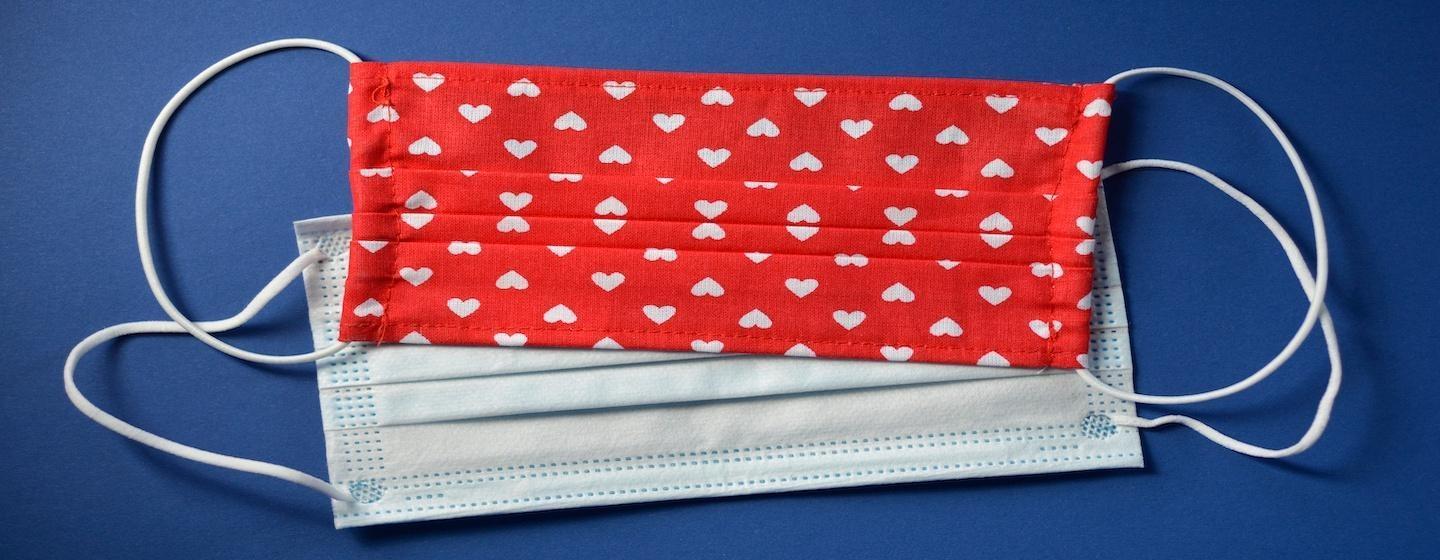Double Masking, COVID-19 Variants, and What to do After Vaccination


As the COVID-19 pandemic enters its second year, and with more than a half dozen variants emerging around the globe, there are new fears and new questions to be answered.
New data from the US Centers for Disease Control and Prevention shows that double masking — using a cloth mask over a medical procedure mask, like a disposable blue surgical mask — can significantly improve protection from Covid-19.
Researchers found that the combination of the two masks can block 92.5 percent of potentially infectious particles from escaping by creating a tighter fit around the face.
The new study, conducted in January 2021, found the effectiveness of cloth and medical procedure masks can be improved by ensuring they are well fitted to the contours of the face to prevent air and particles from escaping from gaps around the mask’s edges.
On blue medical procedure masks, that included folding mask edges inward and knotting ear loop strings where they meet mask fabric to reduce gaps. In other words, creating a tighter fit.
A knotted medical mask can block 63 percent of aerosols that may contain coronavirus, a significant improvement from blocking only 42 percent of particles when unknotted. The findings are published in the CDC’S Morbidity and Mortality Weekly Report.
“There is no downside to double-masking on your own in public at this point,” says Dr. Becky Smith, Medical Director of Infection Prevention and Control and an infectious diseases specialist at Duke University Hospital. “We know that it’s a little bit more cumbersome, but if you have access, particularly to a medical mask, which goes under the cotton mask, it does provide added protection.”
Smith says the advantage to double masking is that it better prevents the leakage of droplets from the person wearing the mask.
“While there will be some added filtration for the double mask wearer, you’re actually helping everyone else more,” said Smith. “Everyone has to kind of do it to get the same benefit.”
Ultimately, it’s a matter of comfort and what each individual feels they need to be safe. Double masking is a good idea but not required.
Bottom line, YES.
New guidance from the CDC says fully vaccinated people do not need to quarantine if they have been exposed to someone with COVID-19 but they should still wear a mask.
Full vaccination is the point two weeks after getting the second COVID-19 shot.
The guidance admitted that it is not yet clear whether someone who has been vaccinated could still pass on the coronavirus to someone else. That’s the first reason to wear a mask. However, the CDC said that less quarantining is a benefit that outweighs the risk of increased transmission.
Here’s the other reason to keep masking up. it is not yet clear whether vaccines will protect against new variants of the coronavirus, so people who have been fully vaccinated should continue to wear masks and respect social distancing rules.
Researchers say it’s no surprise this virus is mutating. All viruses mutate.
“But what is surprising is how rapidly we’re seeing this virus mutate,” said David Montefiori, in a conference call with reporters. He’s a professor and director of the Laboratory for AIDS Vaccine Research and Development in the Department of Surgery at Duke University Hospital.
“Viruses need to replicate in order to mutate. The more opportunities they have to replicate, the more opportunity there is for variants to arise,” adds Montefiori. “The appearance of these new variants is something that should be expected. That’s why there’s been a very diligent effort to monitor through genetic surveillance.”
Vaccine makers continue to monitor whether their vaccines are effective against the variants. The companies also continue to study how long the vaccines are effective or whether a booster shot will be needed. The vaccines simply haven’t been around long enough to know.
That’s why it is important for people to continue to wear masks, wash their hands, and practice social distancing.